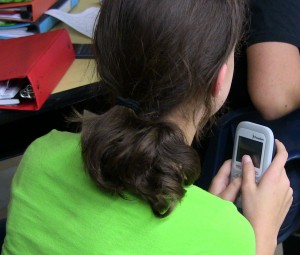Response Learning for Daily Student Participation and Assessment

If you’re looking for that one thing to do during your next professional development, it is to make sure all of your teachers know how to use response learning devices, systems, apps and software, on handhelds, for student participation and assessment on a daily basis. Devices and solutions differ, and I’m sure their design, tech, and features will morph further. Some solutions need great Internet connections and WiFi, and others self-contained Bluetooth, or Internet Radio (IR), but professional development for educators on how to use response learning to archive daily student data and results for use during parent meetings, conferences, faculty meetings, IEPs, and anywhere students are discussed, is imperative. This also requires a deeper look at how response-learning devices are used.
Student participation and assessment beyond simple, infrequent Yes/No “clicker” use can be a great way to get administrators, district leaders, board of education members, and the community backing education technology. Response learning should really be used in class for communications, in discussions, and as an individual student social-media participation choice—with students texting throughout an entire class time. That needs to become the norm, and what administrators will see during every walkthrough observation. It should be seamless, and part of each lesson, like an essential question.
While cool tech and apps may be what rings the excitement bell for classrooms these days, student daily participation and assessment can drive the district-tech trolley further—even in the most difficult economic times. Showing success there can open up more of those cool avenues, too. While success in one area doesn’t always lead to success in others, doing something substantially tangible in education has been known to provide more opportunities.
The real value of response solutions, certainly hasn’t fully been developed—or realized, in most classrooms—yet. Let me make this clear, I don’t mean using response devices/solutions just for simple polling, or in place of hand raising, although that can be valuable, too, if done well. I’m talking about use by students throughout a class to comment, and add to the class conversation and lesson, as one would in a social-media way. If Twitter has shown anything, it has shown that a lot can be said with only 140 characters. While the response learning I’m talking about is classroom self-contained, the principle is the same. An added dimension for every class could also be lessons on social-media citizenship.
If done correctly, response learning can help flip the classroom away from correcting homework classes—to where it should be—all students participating in their own learning in class—building upon and constructing deeper lesson meaning. Students, who never say anything will find a way to join the discussion, if response systems take advantage of text, albeit short text phrases/sentences, rather than Yes, No, and A, B, and C.
Those text conversations, when added to a classroom discussion are more than a record of participation—they are a way for students to help direct their own daily learning. The quietest class member has the voice of the most vocal, and the teacher has a way to reach all students—not just a few. Professional development on how to orchestrate that will be necessary, because it is weaving a different learning-style fabric.
Educators collecting data from each class about and from individual students, using handheld digital learning devices, will know more, and be able to make better, well-informed decisions for individual education plans. Administrators understand that, and parents will love it, because hearing what your kids really do and say during class is important. I’ll bet that some of those text conversations get home, too, shared by students proud of what they’ve contributed during class. Teachers will have substantial information about each student’s daily participation. That makes more sense than the usual, “Johnny/Sally doesn’t participate… do his/her homework,” story lines during conferences, e-mails home, or parent phone meetings.
Tools and ideas to transform education. Sign up below.
Making response-learning systems a daily teacher/student goal may not be as fun as drawing on a tablet, but believe me, it may be more important today. Using handhelds for data-driven learning decisions—and for getting future tech funding and support. If, as an edtech integrator, your most difficult tech students seem to be administrators, and teaching them has been the challenge—and it’s a matter of changing mindset—using response learning systems of some sort—beyond simple “clickers” can help give technology district-wide goals importance. It will also help move talking about, and with, students beyond storytelling when an educator or administrator can share concrete, archived data and student comments from each class day contained in a student’s individualized digital portfolio.
For more PD, read my Primer on Digital Professional Development.
Ken Royal is a teacher/education and education technology blogger/reporter, video interviewer, podcaster, education event news commentator with 34 years of classroom/school and instructional technology experience. His teaching accomplishments include: 4-time district teacher of the year, Connecticut Middle School Teacher of the Year, and Bill and Melinda Gates award for Technology School of Excellence. Read more of Ken’s work at Royal Reports http://www.royalreports.com.
